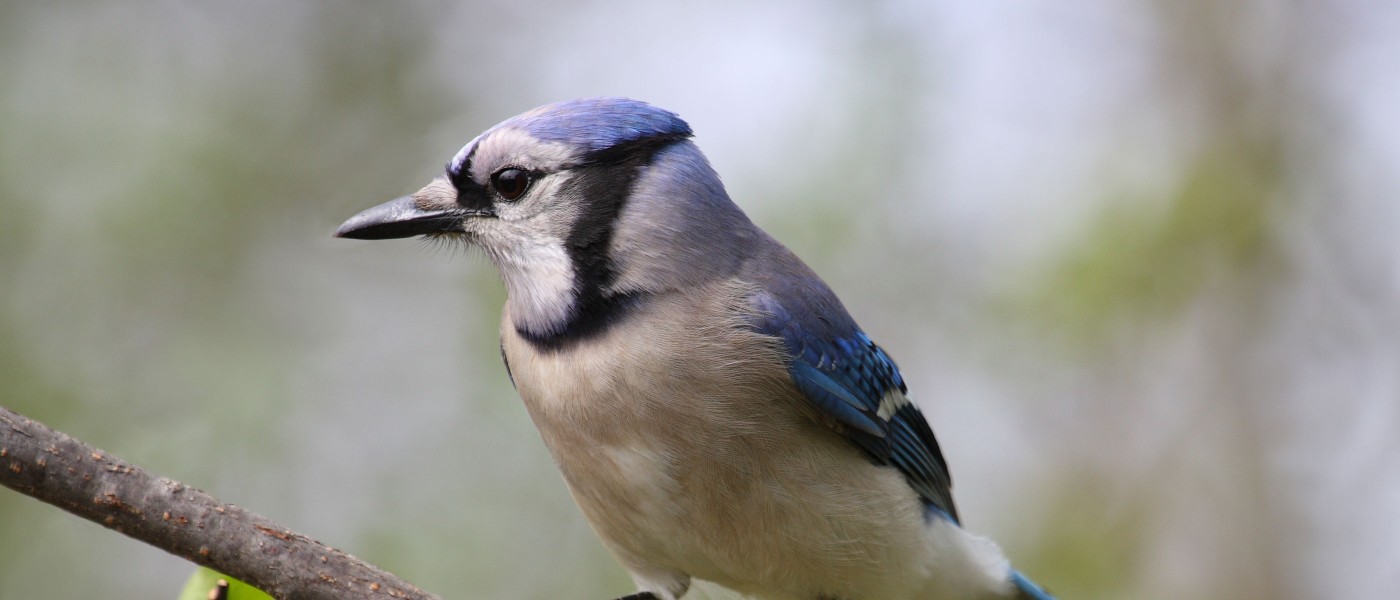Birds of Brooklyn: Blue Jay
Colorful, raucous, and social are some of the words used to describe the blue jay, one of the most common and easily identified birds in the area. Blue jays breed in Prospect Park and across all five boroughs of New York City.
Like its close cousin the American crow, the blue jay is thought to be highly intelligent. Individuals have even been observed using a stick as a tool to rake food close enough to eat it. Another trait of survival success is its somewhat generalized diet, for which its bill is adapted. The jay's bill is not as thick as a cardinal's beak, used for cracking sunflower seeds, or as pointed as a warbler’s, perfect for picking off insects hidden in leaves, but it can do both jobs, and more. For example, a blue jay can hold a nut—often an acorn, one of its favorite foods—with its feet and hammer the nut open with its bill to acquire the meat inside.
The blue jay has been known to be a nest robber, looking for other birds' nests and stealing the eggs and nestlings to feed its own youngsters. Sometimes we see other birds “mob” a blue jay, probably because they sense that the jay is up to no good and could destroy their nests. Blue jays also do some mobbing of their own. They do not like hawks or owls anywhere in their territory, a fact most bird-watchers know. Anytime they notice blue jays mobbing a particular area, they set their sights on that spot in hope of locating a raptor or other predator.
The blue jay is a resident as well as a migrant in the NYC area. Whether it migrates in fall or remains longer depends a lot on the food supply. If this fall’s acorn crop is abundant, you’ll see jays foraging for them well into winter. If the crop is sparse, then they'll migrate south. They like to stay in family groups, so if you spot one jay, there are probably more close by. Whether they stay or go, they will become more vocal as the days grow shorter and cooler. The noticeably louder calls of the blue jays announce the change of season, one of the first avian signs of autumn.
The Birds of Brooklyn series looks at some of the most familiar and fascinating birds that call Kings County their habitat.


